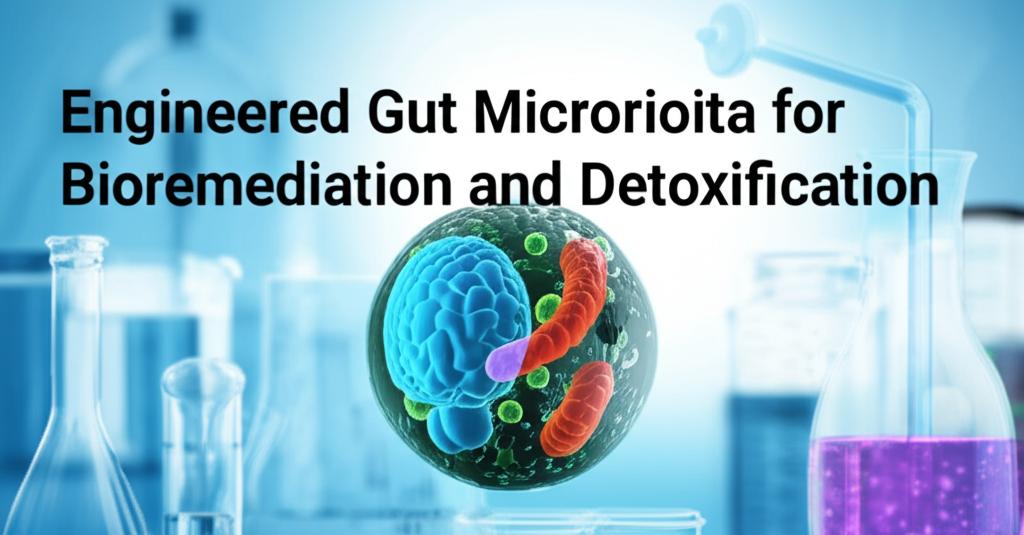Our gut harbors a vast and complex community of microorganisms, collectively known as the gut microbiota. These microbes play crucial roles in digestion, immunity, and overall health. Increasingly, scientists are recognizing and harnessing another vital function of these microscopic inhabitants: their natural ability to break down and neutralize harmful substances. By applying cutting-edge techniques from synthetic biology and genetic engineering, researchers are now enhancing these innate detoxification capabilities, creating 'engineered' gut microbes designed for specific bioremediation tasks.
Enhanced Detoxification Through Microbial EngineeringThe core idea is to equip gut bacteria with new or improved tools to tackle toxins. This is achieved by modifying their genetic makeup. Scientists can introduce genes that code for specific enzymes capable of degrading targeted pollutants, such as pesticides, industrial chemicals, or heavy metals that may enter the body through diet or environmental exposure. These engineered enzymes can transform toxic compounds into harmless byproducts, effectively neutralizing the threat within the gut itself.
Beyond breaking down toxins, engineered microbes can be designed to trap or sequester harmful substances. Techniques like surface display allow bacteria to present specific binding proteins on their outer membranes, capturing heavy metals, for example, and preventing their absorption into the host's bloodstream. Other strategies involve engineering bacteria to enhance the production of metabolites that support detoxification processes in the host, such as influencing liver function or strengthening the gut barrier.
Current Applications and Future PotentialThe potential applications of engineered gut microbes are diverse:
- Combating Environmental Toxins: Engineered bacteria could offer protection against ingested environmental contaminants like pesticides, herbicides (e.g., glyphosate), polycyclic aromatic hydrocarbons (PAHs) found in contaminated food or water, and heavy metals (like cadmium, lead, or arsenic). Researchers are actively developing strains optimized for these tasks.
- Managing Metabolic Byproducts: Certain metabolic diseases involve the buildup of toxic substances in the body. Engineered probiotics are being tested in clinical trials to break down excess harmful metabolites, such as ammonia in hyperammonemia or phenylalanine in phenylketonuria (PKU), directly within the gut.
- Optimizing Drug Metabolism: Gut microbes naturally interact with many medications, sometimes breaking them down too quickly (reducing efficacy) or converting them into toxic forms. Engineered microbes could potentially be designed to modulate drug metabolism, enhancing therapeutic effects or mitigating adverse side effects. Conversely, controlling native microbes that degrade beneficial drugs (like certain chemotherapeutics) is also an area of interest.
- Broader Bioremediation Links: While focused on the gut, the principles and microbes developed can inform broader environmental bioremediation efforts. Bacteria used to clean up chlorinated solvents in soil have surprisingly been found in human guts exposed to these chemicals, suggesting a natural detoxification role that could be enhanced through engineering.
Synthetic biology provides the toolkit for these advancements. It allows researchers to design and build sophisticated genetic circuits within bacteria. These circuits can act like tiny computers, sensing the presence of a specific toxin and activating the appropriate degradation or sequestration mechanism only when needed. This precision helps ensure the engineered microbes perform their function effectively and safely. Techniques like CRISPR gene editing, combined with 'omics' technologies (metagenomics, transcriptomics), help identify natural detoxification pathways and provide the components for building these engineered systems.
Challenges and the Path ForwardDespite the promise, significant challenges remain. Ensuring the safety and containment of genetically modified microbes is paramount. Strategies like auxotrophy (making bacteria dependent on specific nutrients not readily available outside the lab or target environment) are being developed to prevent their uncontrolled spread if they exit the host. The complexity of the gut ecosystem means engineered microbes must be robust enough to survive and function amidst native microbial communities, and their long-term effects on the host and the indigenous microbiome need thorough investigation. Regulatory frameworks for these 'living medicines' are still evolving.
The future holds immense potential. As our understanding of the microbiome deepens and engineering tools become more sophisticated, we can expect engineered gut bacteria to become powerful allies in personalized health, offering targeted protection against toxins and contributing to novel therapeutic strategies for a range of conditions linked to harmful chemical exposures and metabolic imbalances. Continued research, prioritizing safety and efficacy, will be key to realizing the full potential of engineered gut microbiota for bioremediation and detoxification.

